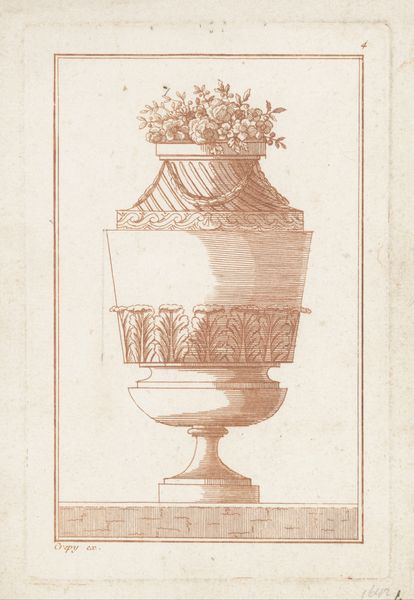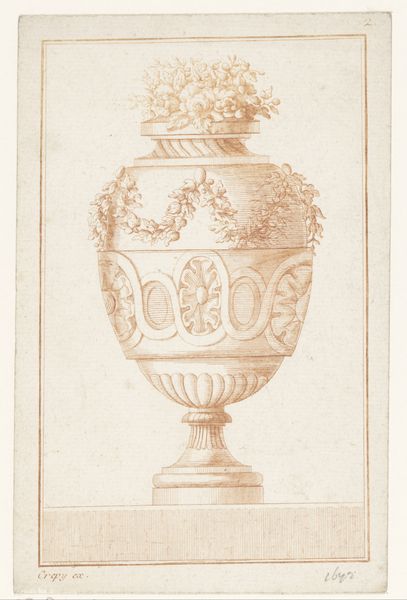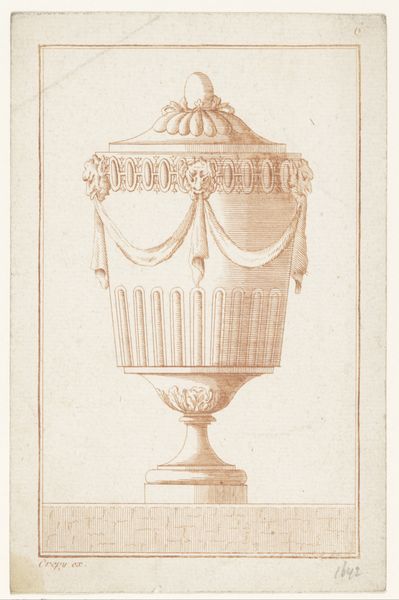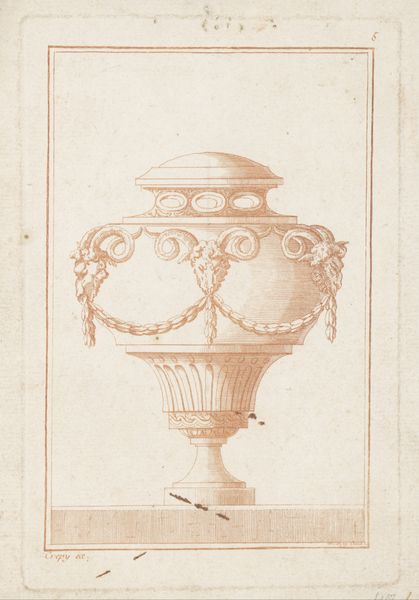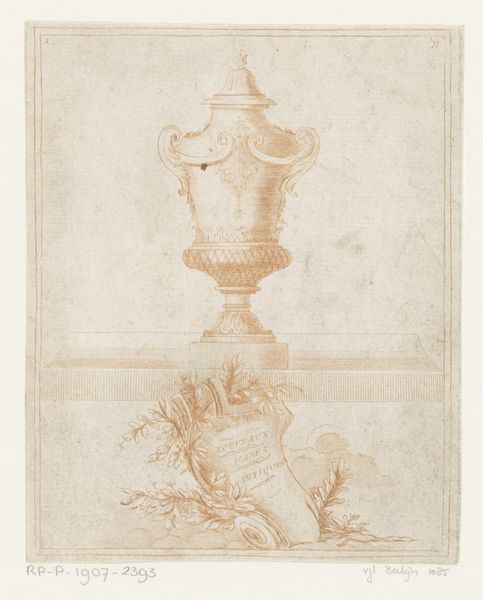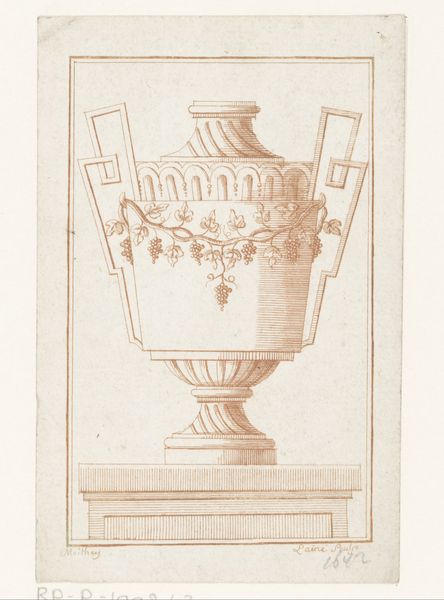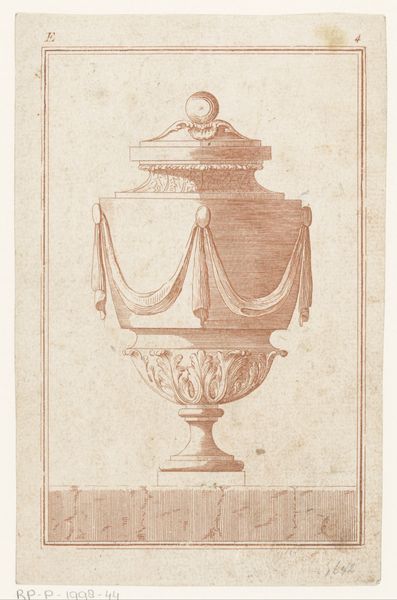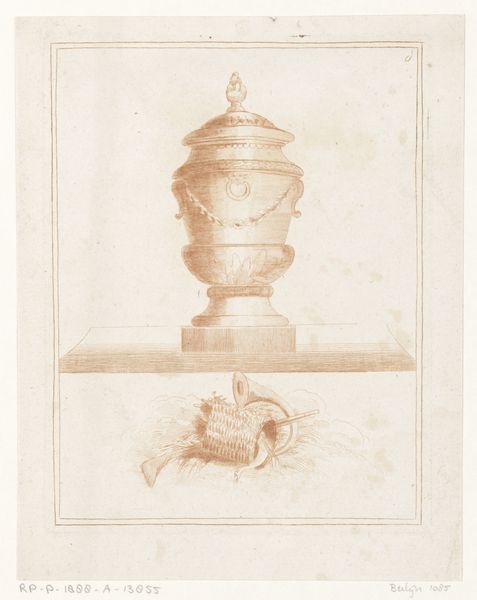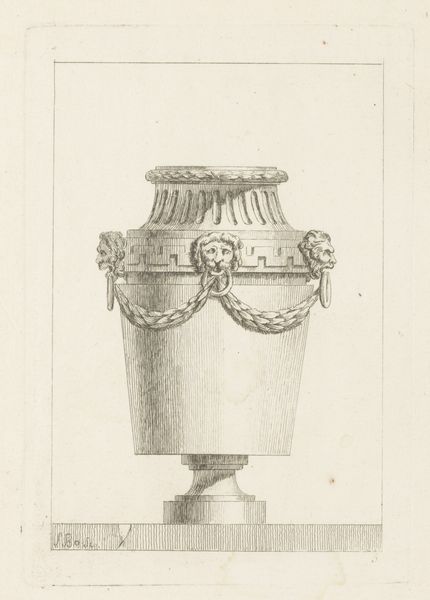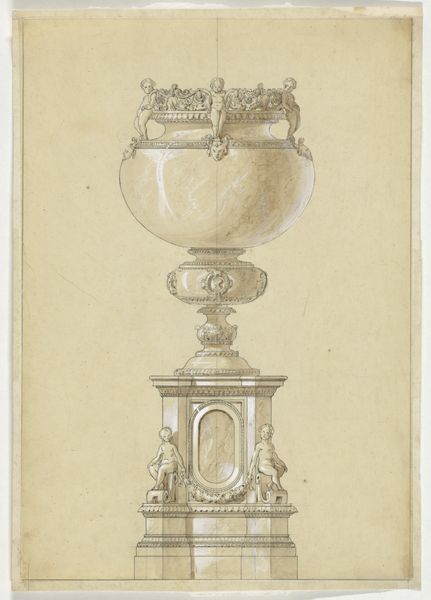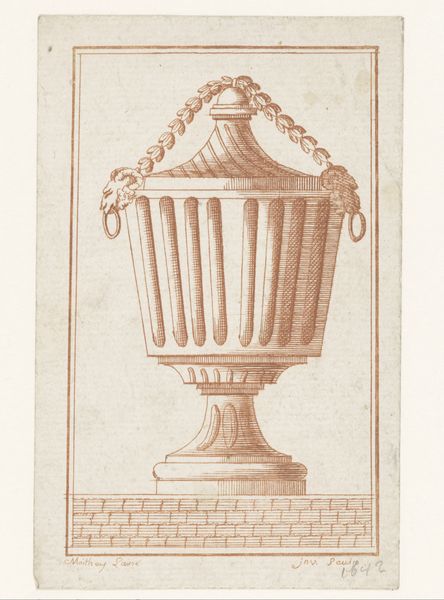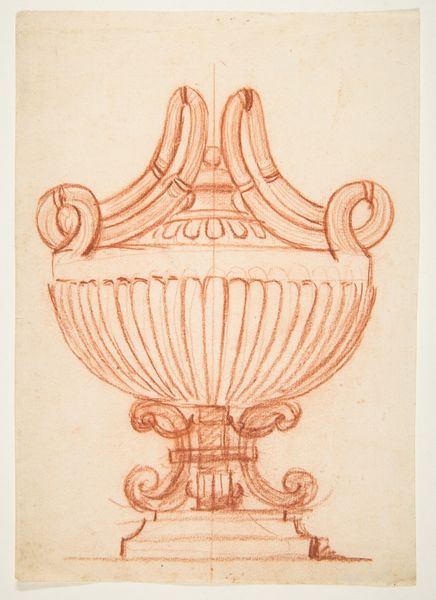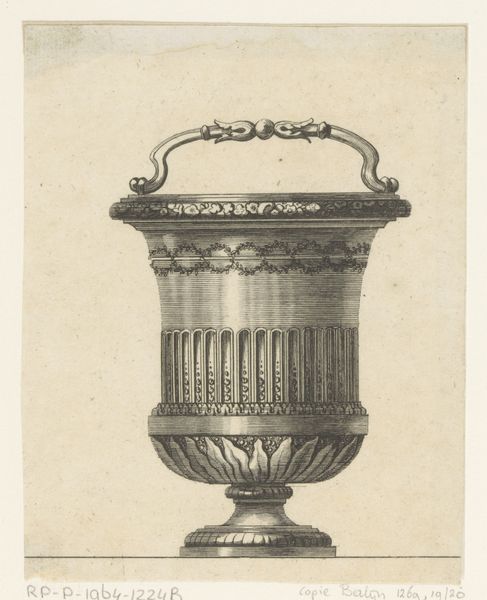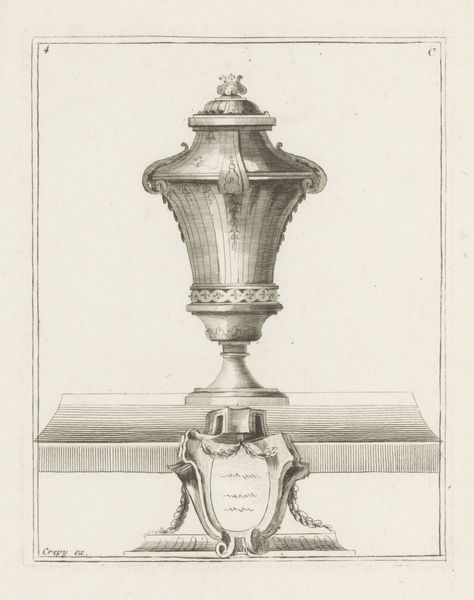
drawing, engraving
#
drawing
#
neoclacissism
#
geometric
#
line
#
academic-art
#
engraving
Dimensions: height 189 mm, width 125 mm
Copyright: Rijks Museum: Open Domain
Curator: This is "Vaas met eikel," or "Vase with Acorn," a drawing by P. Moithey l'aîné, dating back to the late 18th century, between 1760 and 1780. The piece is rendered using engraving. Editor: My first thought is "sturdy." The lines are clean, yes, but the overall effect is one of immovability, almost an architectural presence rather than a vessel. It almost seems like stone rather than ceramic. Curator: Absolutely. Given its Neoclassical style, we should situate the vase within the historical context of the Enlightenment, where the recovery of Greco-Roman ideals intersected with new explorations in science and philosophy. Editor: How do you see the connection to science manifesting itself here, beyond just the clean line of engraving? The social function, as I see it, would place an increased premium on specialized modes of labor at that time. Curator: The precise draftsmanship aligns it with the empirical spirit, aiming for objective representation. However, in its functionality, its role within aristocratic life also becomes crucial for our understanding. I mean that luxury objects signified a claim of inherent privilege, a way to establish an aristocratic legacy through consumer choices. Editor: And these vessels became vehicles, not just for actual materials like flowers, but also symbolic values, with very material implications. Who made it? What materials are deployed? Those determine its class connotations more than its intended usage. You brought up aristocratic uses, but it's interesting the original function becomes superseded by status once materials and labor have a face value. Curator: It highlights a complex social dance. Displaying objects signified a cultivated taste but it’s also about performing power within the existing system of political economy. How does this inform and affect the production processes around art like this vase engraving? Editor: I find it quite illuminating that while representing classical forms, this piece exposes class consciousness related to art, craft, and consumerism that would begin to break open in that precise historical moment, during the decline of aristocratic regimes. Curator: Thinking about Moithey’s "Vaas met eikel," I am now reflecting more deeply on the relationship between artistic expression, political ideologies, and their impact on cultural identities of his period. Editor: And I can only look closer now at the precise lines that made visible a system of production starting to undergo revolutionary challenges, the lines and engravings as much socioeconomic forces as design elements.
Comments
No comments
Be the first to comment and join the conversation on the ultimate creative platform.
